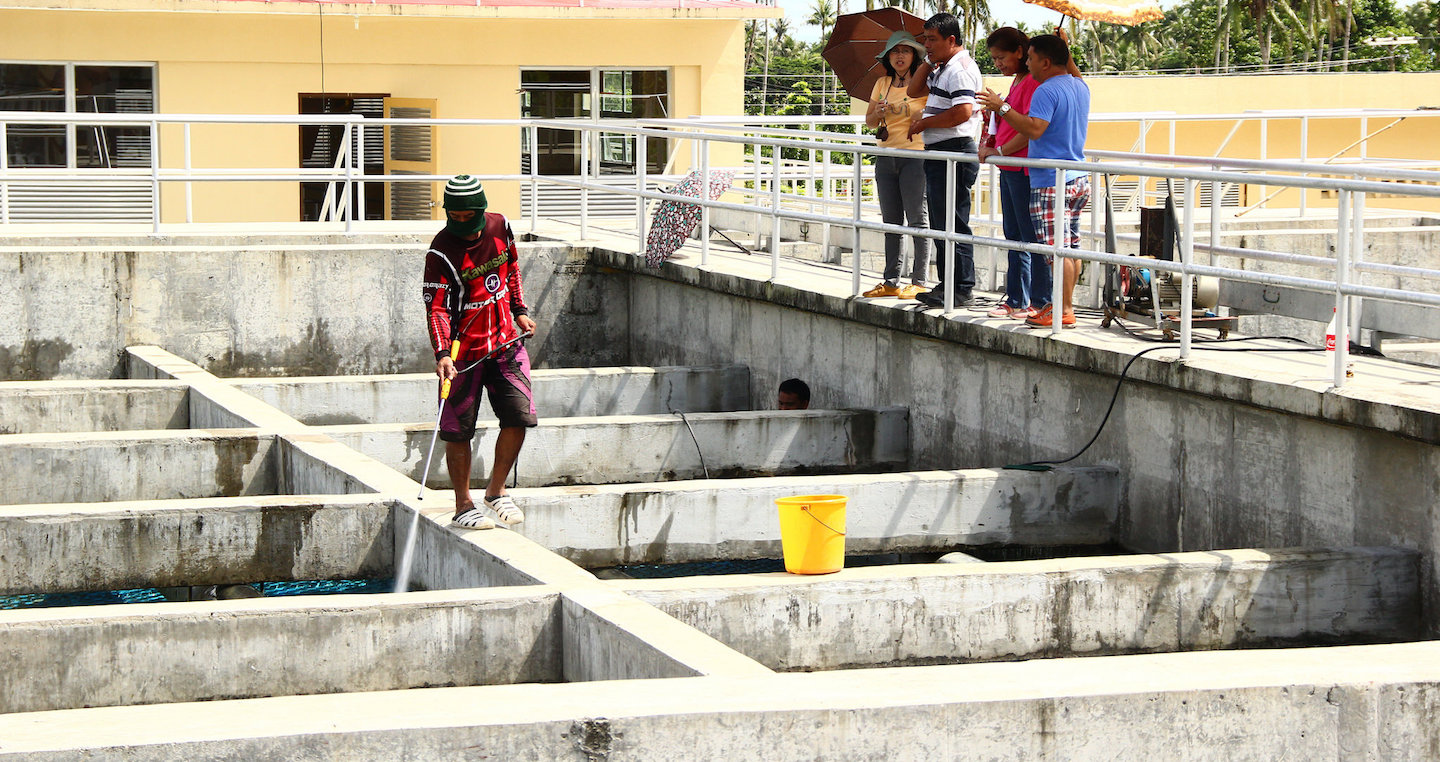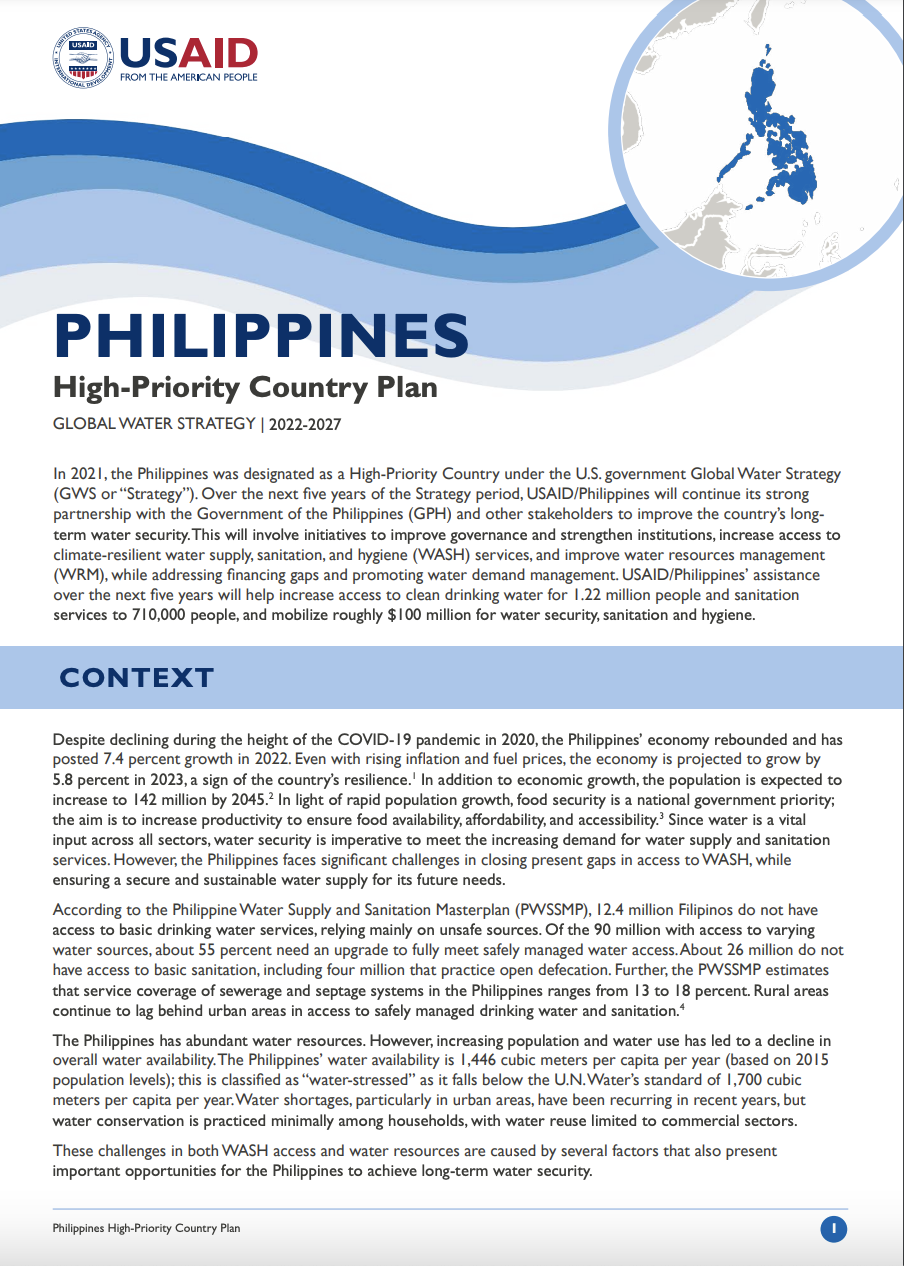Overview
The Philippines was designated a High Priority Country in 2021. USAID is working with partners in the Philippines to:
- Increase access to clean drinking water for 1.22 million people
- Increase sanitation services to 710,000 people
- Mobilize $100 million for water security, sanitation, and hygiene



